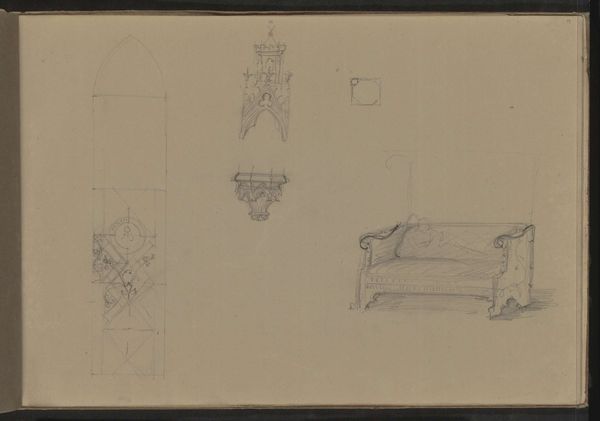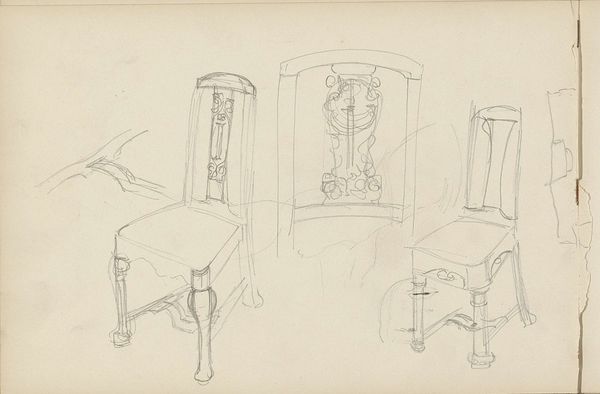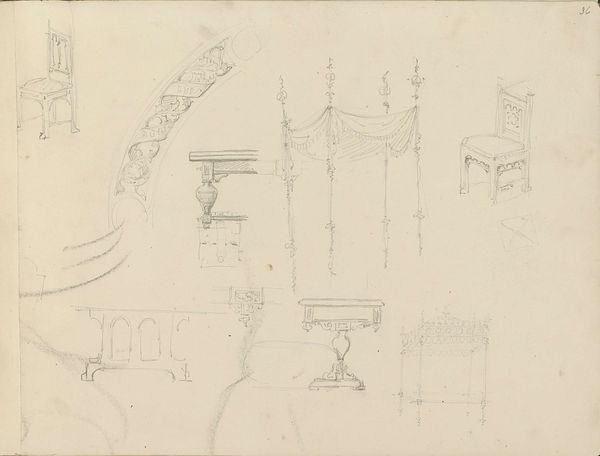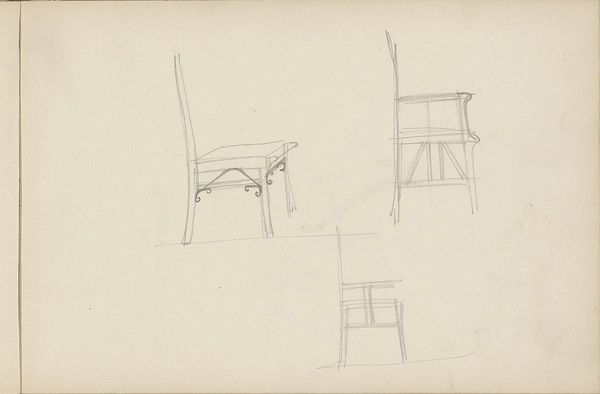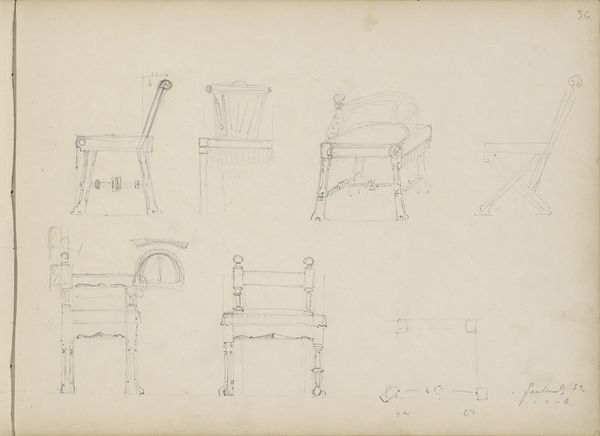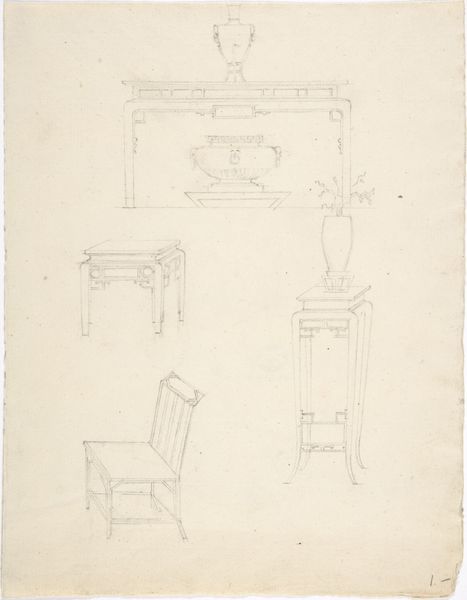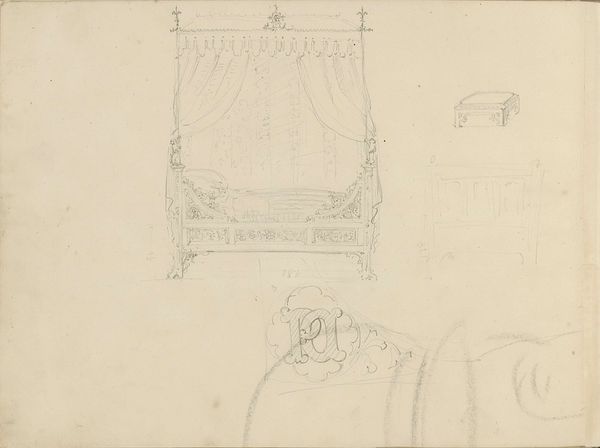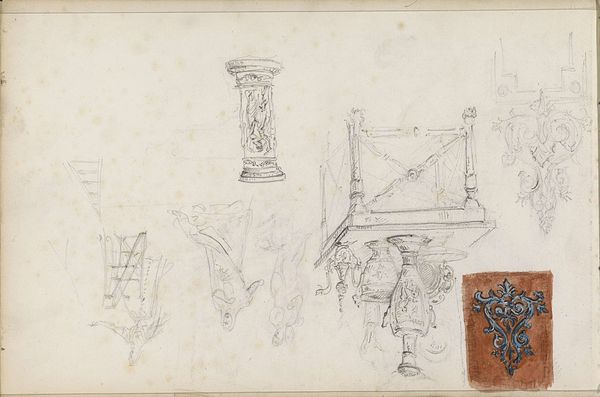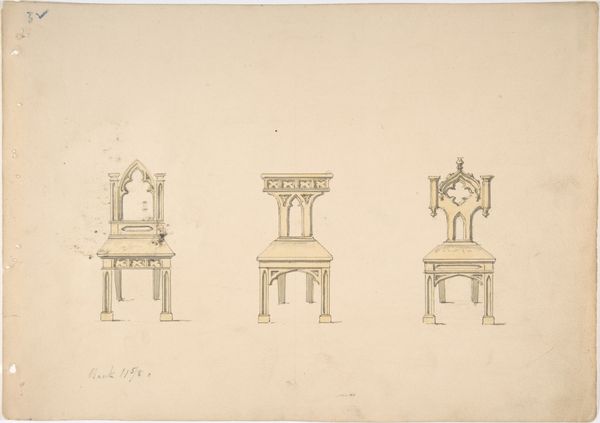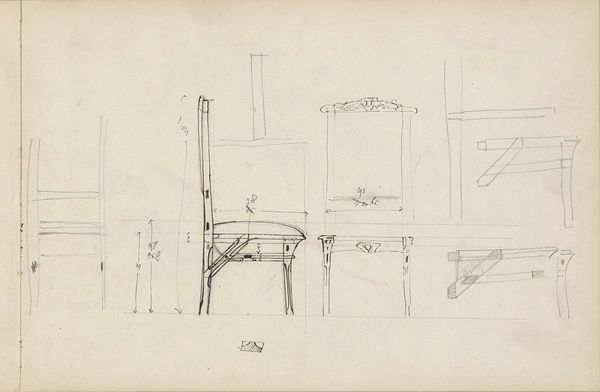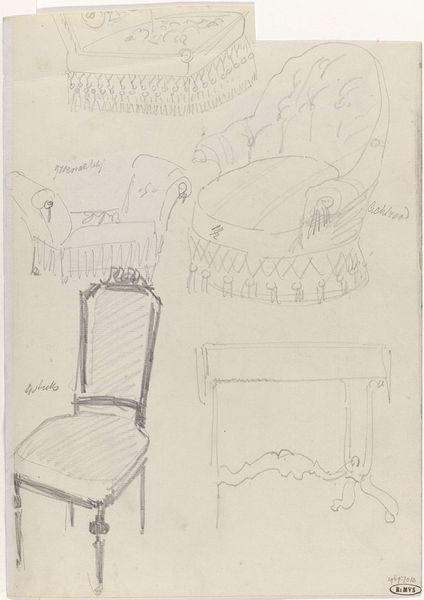
drawing, pencil
#
drawing
#
table
#
light pencil work
#
quirky sketch
#
furniture
#
sketch book
#
form
#
personal sketchbook
#
idea generation sketch
#
sketchwork
#
sketch
#
pencil
#
sketchbook drawing
#
storyboard and sketchbook work
#
academic-art
#
sketchbook art
#
initial sketch
Copyright: Rijks Museum: Open Domain
Editor: This is "Stoelen en ornamenten," a pencil drawing from around 1850 by Pierre Joseph Hubert Cuypers, found in the Rijksmuseum. It strikes me as a really raw, immediate look into the design process, like peering into the artist's sketchbook. What formal elements stand out to you in this work? Curator: The emphasis on line and form is immediately apparent. Notice how Cuypers uses delicate, almost tentative pencil strokes to delineate the various shapes and ornamental details. It's less about creating a realistic depiction and more about exploring the possibilities of design through repetition and variation. How do you see the distribution of positive and negative space affecting the overall composition? Editor: I think the empty space is as important as the lines themselves, almost like a visual breathing room that lets the eye travel across the page. It prevents the drawing from feeling cluttered despite the density of the sketches. Curator: Precisely. This interplay between positive and negative space enhances the perception of depth and volume, even within the limitations of a pencil sketch. Consider the linear perspective. Cuypers doesn't adhere to strict, scientific perspective, but instead uses a more intuitive approach to suggest three-dimensionality. It's through these formal choices that we begin to understand his aesthetic concerns. Does the repetition of forms indicate intention to you? Editor: Absolutely. It shows him working through different versions of the same idea, refining the details and proportions each time. There’s a clear evolution of form visible across the page. Curator: Indeed, each variation functions as a study in itself, revealing a systematic investigation of shapes and structures. The absence of color further accentuates the underlying framework. What new appreciation for the role of sketches has been kindled? Editor: This has totally changed my perspective; sketches as finished artworks and the story told about the mind of an artist. Thank you! Curator: You're welcome, recognizing these foundations provides valuable insight into their conceptual development.
Comments
No comments
Be the first to comment and join the conversation on the ultimate creative platform.
